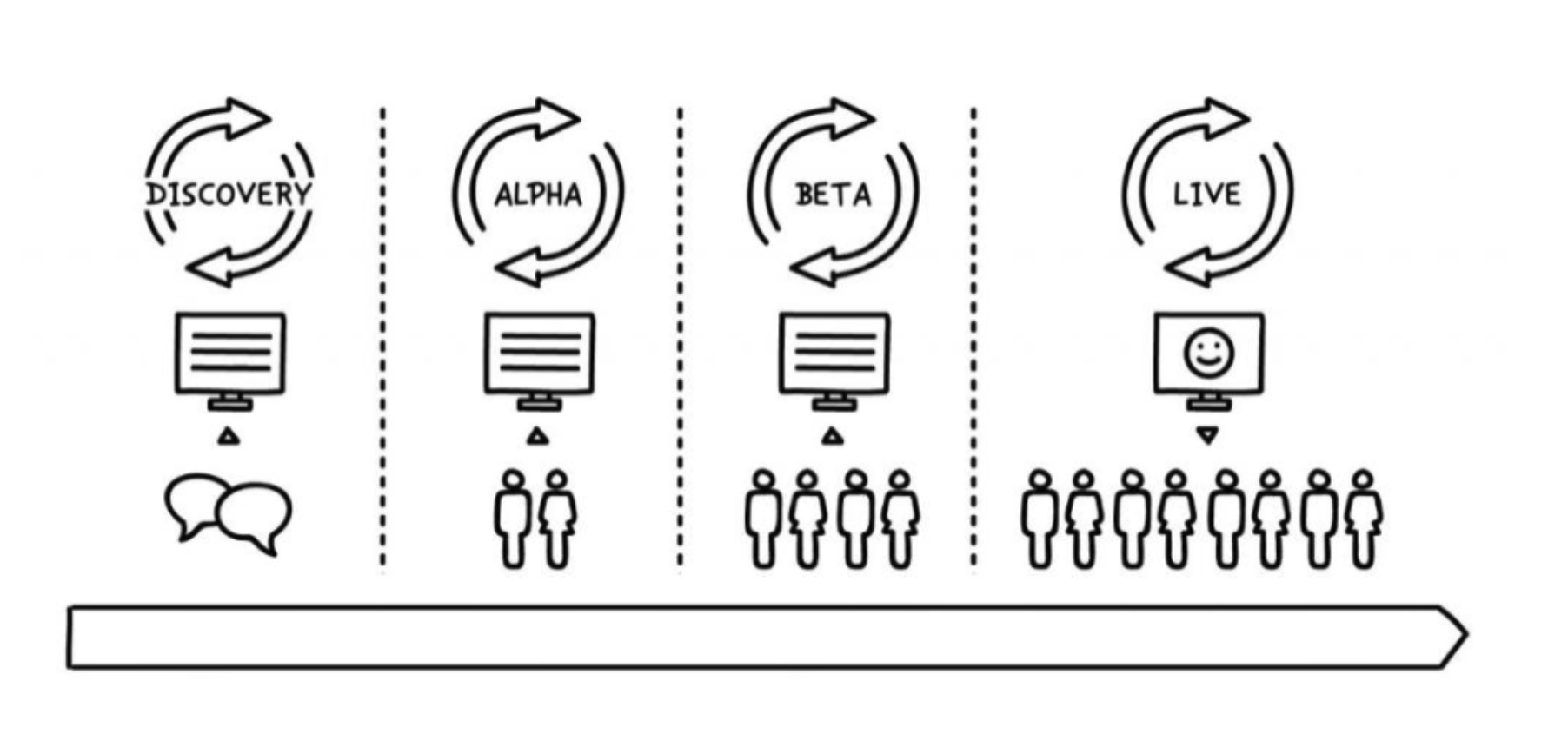Stages of the service design and delivery process
The playbook is structured using the service design and delivery process framework. The process teaches you how to start with user needs, not government needs and build services that are simpler, clearer, and faster.
What is the service design and delivery process?
The service design and delivery process is a new way of delivering government services that makes it easier and quicker to build the right thing for users. Traditionally, government has built services in response to policy needs, and user needs would be discovered after the thing was built and finished.

Traditional service design and delivery in government. Image from Getting started with the service design and delivery process (Opens in new window) by The Digital Transformation Agency.
The service design and delivery process changes this to start with user needs. The team continues to research with users through all stages to check they are building and improving the right thing.
Following the service design and delivery process can help you meet criteria 3 use agile and customer-centred processes (Opens in new window) from the digital service standard (Opens in new window) .
Definition: ‘Customers’ and ‘users’

The customer is the person who purchases a product or service, and the user is the person who uses it. Often the customer and the user are the same person, but not always.
Because of this, the playbook uses the term ‘user’ rather than ‘customer’.
The stages
The plays are organised into the four stages of the service design and delivery process.
- Planning
Whilst not an official stage in the service design and delivery process, planning is essential to set your team up for success. This is when the team will determine who needs to be involved and when, organise and set up a project space, and plan and communicate key timelines, milestones and activities for each of the following stages with relevant stakeholders. - The discovery stage
In this stage the team gets a deep understanding of the users and their needs and begins developing hypotheses to solve the problems. One of the main differences is the early focus on identifying high-level requirements, which are often referred to as user needs. - The alpha stage
In this stage the team builds prototypes to test their hypotheses. On completing the discovery and alpha phases, the team will have a good idea of the services, user needs and solution architecture and a plan for turning the beta into a live product or service. - The beta stage
In this stage the team builds and tests a solution based on the hypotheses validated in alpha. This phase will generally involve releasing a version to the public. - The live stage
In this stage the team is changed to maintain and improve the service. The team will iteratively improve the service, reacting to new needs and demands, whilst meeting and exceeding targets set during the development.
The stages build on each other, but they don’t always go in order. Sometimes a design process might go back to an earlier stage (for example, a service or product in beta might need to go back to discovery to work on a different problem). This iterative process helps us ensure that we provide a suitable solution for our users.

The service design and delivery process. Image from Getting started with the service design and delivery process (Opens in new window) by The Digital Transformation Agency.
Tip – Using other design approaches

This playbook uses the service design and delivery process, but you can use plays and game plans with other frameworks too – for example, human centred design (Opens in new window) (Opens in new window) .
This service design and delivery approach is aligned with an agile approach. For this way of working and delivering projects, the Queensland Government Customer and Digital Group (QGCDG) endorses the use of the United Kingdom Cabinet Office Infrastructure and Projects Authority’s Guide on assurance for agile delivery of digital services.
This means that you can use the plays in this playbook, aligned with the 4 stages of the process to deliver ICT products and services in a gated delivery environment. The gated assurance process for agile projects is explained further on this page (Opens in new window) .
Retiring a product or service
It is also important to recognise when it is time for a Live product or service to be retired. Although not covered by this playbook, your service may eventually need to be retired, for example, if policies change or if there’s evidence that users’ needs have changed.
When retiring a service, you should consider user needs in the same way you did when you built the service.